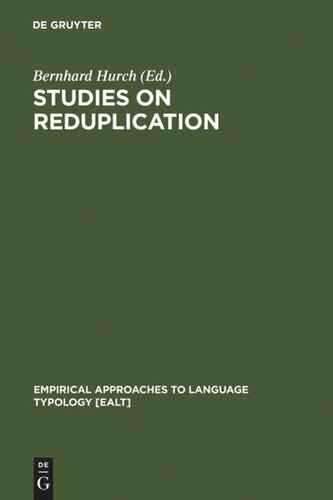

Most ebook files are in PDF format, so you can easily read them using various software such as Foxit Reader or directly on the Google Chrome browser.
Some ebook files are released by publishers in other formats such as .awz, .mobi, .epub, .fb2, etc. You may need to install specific software to read these formats on mobile/PC, such as Calibre.
Please read the tutorial at this link: https://ebookbell.com/faq
We offer FREE conversion to the popular formats you request; however, this may take some time. Therefore, right after payment, please email us, and we will try to provide the service as quickly as possible.
For some exceptional file formats or broken links (if any), please refrain from opening any disputes. Instead, email us first, and we will try to assist within a maximum of 6 hours.
EbookBell Team

5.0
50 reviewsFor several reasons, mostly inherent to the different developments of generative grammar, an increasing number of publications have dealt with reduplication in the past 20 years. Reduplication lends itself perfectly as a test field for theories that opt for a non-segmental organization of phonology and morphology. As it happens frequently, then, the discussion centers around a rather small set of data for which alternative analysis are offered, and which themselves are intended to contribute to the foundation of new theoretical developments.
The present volume (which goes back to a conference on reduplication at the University of Graz, Austria) offers a broader approach to reduplication not only from different theoretical viewpoints, but especially for its phenomenology. Across theories a number of highly qualified authors deal with formal and functional perspectives, with typological properties, with semantics, comparative issues, the role of reduplication in language acquisition, the acquisition of reduplicative systems, sign languages, creoles and pidgins, general grammatical and cognitive principles; the picture is completed by a series of language or language-family specific studies as on Uto-Aztecan, Salish, Tupi-Guarani, Moroccan and Cairene Arabic, various African languages, Chinese, Turkish, Indo-European, languages from India, etc. The overall scope of the conference was to contribute to a new level of discussion of the phenomenon, across theories and across specializations and interests.
Update on Contributor's addresses (PDF)